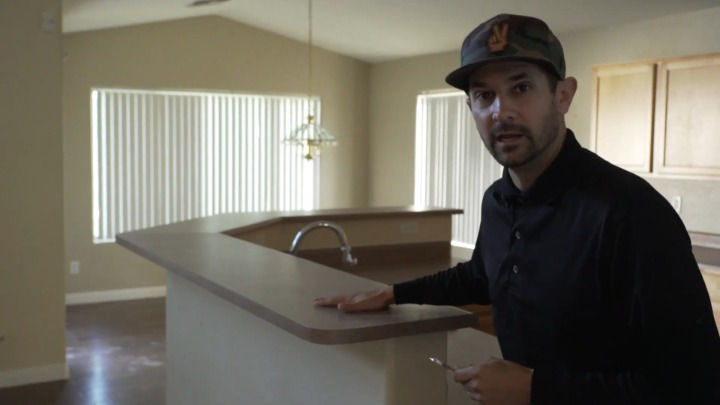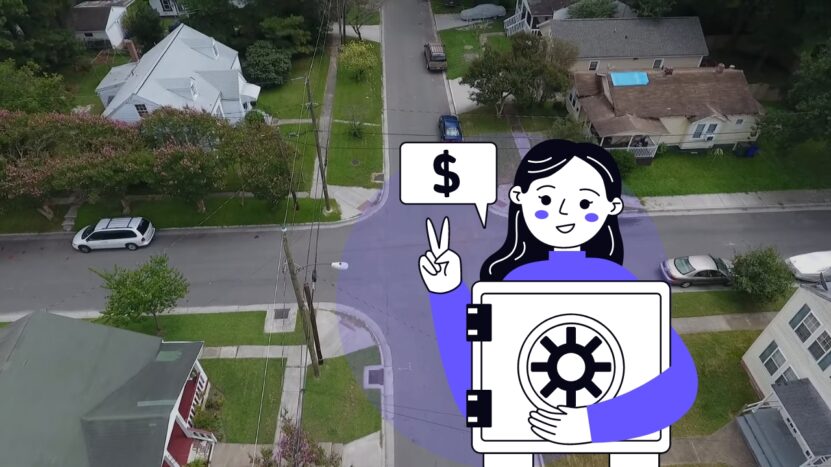When a person finds themselves on the precipice of life-altering change, having the right resources and support becomes incredibly important. This is especially true when we discuss the journey to recovery from substance abuse or reintegration into society after incarceration. In this context, halfway houses – also known as sober living homes or re-entry homes – come into play as essential support systems. In this article, we will delve into what halfway houses are, their purpose, and most importantly, we’ll answer the question, “Can you choose a halfway house?”
Halfway Houses in a Nutshell
Halfway houses are residential facilities that provide a bridge between inpatient treatment centers, prisons, or rehabilitation and full reintegration into society. They serve as a safe and structured environment for individuals who are no longer in the acute phase of recovery but still need support to maintain sobriety or assimilate back into everyday life. Halfway houses are often group homes where residents live together and support each other on their respective journeys.
The core element of a halfway house is the fostering of personal responsibility while providing a level of supervision and structure. This balance helps residents gradually regain independence while minimizing the risk of relapse or reoffending. Halfway houses operate under rules and guidelines designed to maintain a safe and sober environment, and residents are usually required to participate in chores, secure employment, attend meetings, and abide by curfews.
While halfway houses may have started as a solution for the recently incarcerated, they have evolved over the years to cater to a variety of needs. Today, they serve a diverse group of people, from those recovering from substance abuse and individuals with mental health issues to those transitioning from incarceration.
Their Purpose
Halfway houses play a crucial role in reducing relapses in people recovering from substance abuse and reducing recidivism among those released from prison. By providing a stable and supervised environment, they help residents navigate the precarious phase between intensive treatment or incarceration and a full return to society. They essentially serve as a “halfway” point, hence the name, where individuals can reinforce their new habits and coping mechanisms before stepping back into their regular life.
One of the main purposes of a halfway house is to provide residents with a strong and supportive community. Living with others who are going through similar experiences can provide comfort and a sense of belonging. This shared journey can help reinforce positive behaviors and provide mutual support during challenging times. Moreover, halfway houses can help individuals build life skills, gain employment, and establish a routine – all critical factors in sustaining recovery and reducing the risk of relapse or reoffending.
Another purpose of a halfway house is to help individuals gradually reintegrate into society. This means helping residents find employment or education, build healthy relationships, and develop financial independence. It’s not just about maintaining sobriety or staying out of prison; it’s about equipping residents with the tools and resources they need to live fulfilling, productive lives.
Can You Choose a Halfway House?
Now, let’s address the question at hand: Can you choose a halfway house? The answer is generally yes but with a few caveats. Not every person will have the same degree of freedom when choosing their halfway house. This often depends on their personal circumstances, availability of resources, and specific requirements. For instance, someone being released from prison might be assigned a halfway house by a parole officer, while someone leaving a rehab facility may have a greater choice in the matter.
However, more often than not, individuals do have some say in the matter, especially if they’re proactive in their search. If you or your loved one is in a position to choose, it’s essential to make the decision carefully. Remember, the goal is to find a place that will best support your journey to recovery or reintegration.
Keep in mind, however, that while choice is possible, it may be limited by factors such as space availability, location, and cost. Some halfway houses are privately funded and can be quite costly, while others are government-funded or operate on a sliding fee scale, making them more accessible to those with limited resources.
Factors to Consider

When choosing a halfway house, it’s crucial to consider several factors to ensure it aligns with your specific needs and circumstances. The first factor to consider is the type of residents the halfway house caters to. Some are exclusively for individuals recovering from substance abuse, while others are intended for those transitioning from incarceration. Some houses cater to specific demographics, such as gender-specific houses or those that cater to veterans.
Another critical factor is the house rules. Halfway houses have rules to maintain a safe and supportive environment. This can range from enforcing curfews and mandating participation in chores and group activities to random drug testing. Understanding these rules and ensuring you can comply with them is vital in making your stay successful.
Lastly, consider the house’s approach to recovery or reintegration. Some houses follow a 12-step program approach, while others may focus on different methods, like cognitive-behavioral therapy, vocational training, or psycho-educational groups. It’s important to find a program that aligns with your beliefs and philosophy toward recovery.
Researching Halfway House Options: Where to Start
If you’re considering a halfway house, it’s important to start your research early. Online resources can be a great starting point. Websites of national organizations like the Substance Abuse and Mental Health Services Administration (SAMHSA) provide comprehensive databases of licensed and accredited facilities. Online forums and support groups can also provide firsthand accounts and recommendations.
Don’t limit yourself to online research. Reach out to local support groups, treatment centers, or parole officers who may have valuable insights into local options. You could also consider consulting with a social worker or case manager if you have access to one.
Remember, it’s crucial to visit potential halfway houses, if possible. This will give you a feel of the environment, a chance to interact with staff and residents, and an opportunity to ask any lingering questions you may have.
Assessing the Quality of a Halfway House

Assessing the quality of a halfway house is a critical step in the selection process. One thing to look for is the credentials of the staff. Are they trained professionals with expertise in addiction recovery or reintegration? You should also look into whether the halfway house is licensed or accredited by relevant bodies, which can provide an assurance of quality.
Next, consider the structure of the program. Does the house have a clear structure and set of rules for residents to follow? Is there a balance between supervision and personal freedom? Do they provide access to services such as therapy, skills training, or job placement assistance?
Finally, assess the environment of the house. Is it clean, safe, and well-maintained? Does it feel like a supportive and respectful space? Remember, this place will be your home for a while, so it’s important that it feels comfortable and conducive to your recovery.
Matching Your Needs
One of the most important aspects of choosing a halfway house is ensuring that it matches your specific needs. This includes both your immediate needs, such as a safe place to live and access to necessary medical or therapeutic services, and your long-term goals, such as building life skills, securing employment, or pursuing education.
Look for a house that not only provides the necessary support for your recovery but also helps you make strides toward your future goals. This might involve vocational training, education opportunities, financial planning assistance, or other supportive services.
Don’t forget to consider your personal comfort and compatibility with the house’s community and approach. Do you feel comfortable with the staff and other residents? Do you agree with their philosophy toward recovery and reintegration? Ensuring a good match in these areas can significantly impact your experience and success in a halfway house.
Financial Considerations

Let’s now turn our attention to financial considerations. Halfway houses can vary greatly in cost, depending on factors such as location, amenities provided, and whether they’re privately run or government-funded. Some houses operate on a sliding scale fee structure, meaning the cost is based on your income level.
When considering the cost of a halfway house, it’s also important to consider what is included in the fee. Does it cover meals, utilities, transportation, therapy sessions, and other services, or will these be additional costs?
Finally, consider your funding options. If you cannot afford the costs out-of-pocket, explore other funding avenues. This might include insurance coverage, government assistance programs, non-profit organizations that provide grants, or fundraising within your community.
The Importance of Location
The location of a halfway house can play a significant role in your recovery and reintegration process. A house in a safe, quiet neighborhood can provide a peaceful environment conducive to recovery. On the other hand, a halfway house in a busy urban area might provide better access to job opportunities, public transportation, and community resources.
The proximity to your support network of family and friends is another crucial factor. A nearby location can make it easier for loved ones to visit and provide support, which can be invaluable during the recovery process.
Finally, consider the proximity to potential triggers. For individuals recovering from substance abuse, a house located away from areas associated with previous drug or alcohol use can be beneficial.
Supportive Services: What to Expect in a Halfway House
In a halfway house, residents can expect a variety of supportive services designed to aid their recovery and reintegration process. These services often include group therapy, individual counseling, 12-step meetings, relapse prevention training, and life skills workshops. Some houses may also offer vocational training, job placement assistance, educational support, and financial planning services.
Importantly, most halfway houses provide structured daily routines to help residents establish healthy habits and patterns. This often includes assigned chores, scheduled meals, mandated group activities, and curfews.
Remember, the goal of these services is not just to maintain sobriety or prevent recidivism but also to empower residents to lead fulfilling, self-sufficient lives. The specific services provided can vary from house to house, so it’s important to find a place that offers the support you need.
Making an Informed Decision
Making the decision to enter a halfway house is a significant step toward recovery and reintegration. However, the process can be overwhelming. That’s why it’s important to take your time, do your research, and make an informed decision. Consider the various factors we’ve discussed – the house’s rules and approach, the quality and environment, the cost and location, and the supportive services provided.
Don’t hesitate to ask questions and seek advice from trusted sources, whether that’s a therapist, parole officer, or someone who has experienced living in a halfway house. Remember, the goal is to find a place where you feel safe, supported, and ready to take the next step in your journey.
Tips for a Smooth Experience in a Halfway House
Once you’ve made the decision and chosen a halfway house, there are a few tips that can help ensure a smooth experience. Firstly, approach your stay with an open mind and a positive attitude. Be ready to embrace change and take advantage of the supportive services provided.
Remember, a successful stay in a halfway house requires personal responsibility. Adhere to the house rules, participate actively in programs, and contribute positively to the house community. Building a network of support among fellow residents can provide encouragement and motivation during challenging times.
Finally, don’t rush your journey. Recovery and reintegration take time, and it’s important to progress at your own pace. Use your time in the halfway house to build a strong foundation for a healthy, productive life.
Final Words

Halfway houses play a crucial role in many people’s journey to recovery and reintegration. They offer a supportive environment where residents can strengthen their coping skills, build life skills, and work towards their future goals. Whether you’re transitioning from a treatment facility or prison or seeking support for mental health issues, a halfway house can be a great resource.
Yes, you can choose a halfway house – but remember, it’s not about choosing just any house. It’s about finding the right place that aligns with your needs, beliefs, and long-term goals. With careful consideration and thoughtful research, you can make an informed decision that can significantly impact your journey toward a healthier, more fulfilling life. Remember, you are not alone on this journey, and support is available to help guide you through this important transition.

